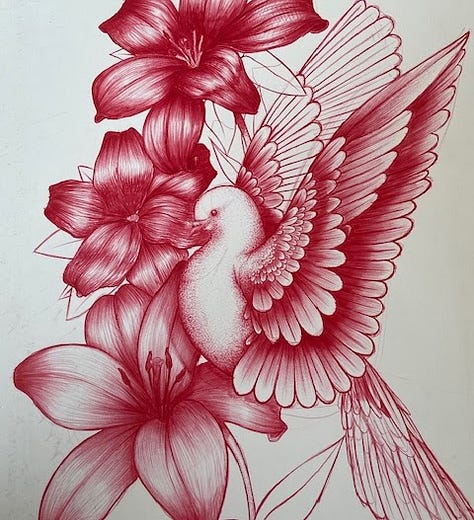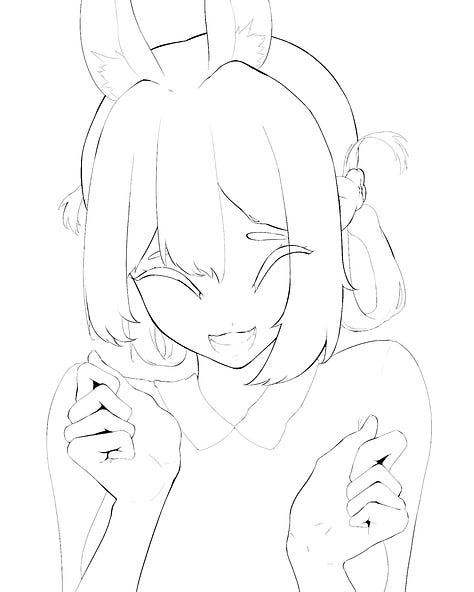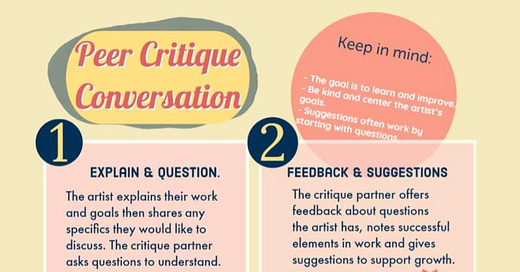The critique is my love and my archnemesis.
As an artist, I’ve experienced horrible critiques that left me with nothing but self-doubt. Still, I’ve also had many critique experiences, mostly with trusted friends, that absolutely spurred my personal growth and fed the most creative periods of my life.
So I know critique is important. I also know it can be really bad. I want that magical collaboration for my students that can’t be forced but every time I do a whole class critique activity I get lots of reluctant compliance.
This year I realized that maybe I didn’t have to force it.
I had two students in my Studio class who both were working on goals related to digital art and both asked me for feedback, Studio is entirely student-directed, meaning each student is responsible for their learning and I’m there to support them. To help these students reach their goals I realized it would be much better for them to talk to each other.
I asked each of them, and another student who had a similar style, if they would like to talk to peers who had similar interests and also wanted feedback. They all agreed and participated in their first critique group the next week.
I sent them out to the hall with their work for their conversation. I gave them a copy of my peer critique conversation to get them started, then went back into the classroom and left them to it. I was curious about how it was going, so I quietly walked over to where they were talking and peeked around the corner - they were all talking, listening to each other, and evening smiling! Of course, when they saw me they stopped. I had to fight my urge to know exactly what they were talking about but I decided to trust them and go back inside. Later, when they came back to the room they all had good things to say.
The most telling indicator of success was that they all wanted to participate again, willingly. I now have two critique groups set up that meet every two weeks. This is not something that is graded or that I require - it’s totally their choice to participate or not. They’ve been successful, by far the most successful of any critique I’ve ever planned, for a few different reasons.
Students chose to participate. I asked and listened to students about what they wanted. If they preferred not to participate I respected that. I talk to each student individually daily and ask them questions that prompt them to think critically about their art, so they are learning similar skills.
They were in control of the conversation. This part was hard for me! However, letting students direct the conversation helps make it valuable for them, as did finding them a private place to talk.
I carefully matched groups based on what I knew about my students - specifically, their needs and goals. I chose students with similar goals and interests, but also those who did not have a friend to talk to about work sitting near them. They were all people who I saw needing a social connection to learn more but also to enjoy class more.



Thank you for reading! I’ll be writing about digital portfolios in the next two weeks with student examples. Is there anything you would like to know about how I use digital portfolios?





Thank you for this post - I am totally inspired to see if I can create some student groups like that. Regarding digital portfolios, I’d love to know if and how you grade them, and how often you require your students to make entries. Thank you so much! This blog is such a resource for me.
I, too, would like to know how you grade them and how often you require them. We use a block schedule, and I see the students 4 (80 min) 4 times in a 7-day cycle. I believe there is a "goal" component to your digital portfolio. Do they establish/record that goal first?